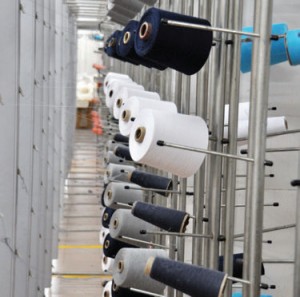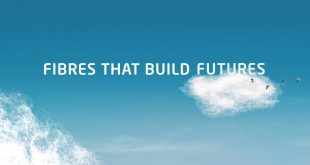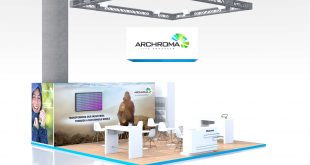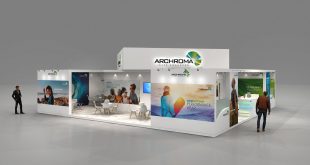 Efficient use of energy has become a hot topic among textile manufacturers in Turkey, where fuel and electricity prices have increased by up to 50% over the past years. To keep an eye on costs in a competitive market, addressing energy efficiency is a must.
Efficient use of energy has become a hot topic among textile manufacturers in Turkey, where fuel and electricity prices have increased by up to 50% over the past years. To keep an eye on costs in a competitive market, addressing energy efficiency is a must.
Besides being a cost factor, the use of energy also has an environmental impact by causing CO2-emissions, which are responsible for climate change. Consumers increasingly expect textile brands and retailers to reduce these emissions. Looking at the carbon footprint of textiles, the impact of manufacturing is significant. For example, a cotton jacket being
produced in Turkey causes 6 kilograms of CO2 throughout the production chain – with a total of 13 kg along the complete life-cycle.
Joint initiative of retailers and brands
To help manufacturers to address these issues, the Carbon Performance Improvement Initiative (CPI2) was founded by nine German retailers, among which are the Otto Group, Tchibo, KiK, s.Oliver, tom Tailor and others. The initiative is supported by the German Ministry for the Environment, the German Federal Agency for the Environment and the German Investment and Development Company. Hamburg based consultancy Systain Consulting GmbH is the assigned developer of the initiative.
A web-based tool made for textile manufacturers
“Carbon Performance Improvement Initiative is a management instrument that offers concrete support”, says Oliver Klinck, Vice President Category Ladies’Wear and Men’s Wear from OTTO Germany. The aim of the retailers and the Carbon Performance Improvement Initiative is to reduce the carbon footprint in the textile chainon a large scale. A web-based self-assessment tool has been created with which factories can analyze all relevant processes. This will help to systematically identify areas where energy can be saved. The CPI2-tool will provide individual recommendations on where to take action and give support through downloadable calculation- tools, checklists, manuals and info-sheets. Also case studies from other textile and shoe factories are provided to show the actual results ofactions taken. Furthermore, the factory enters its energy consumption data into the tool and receives a calculation of the factory’s CO2-emissions immediately.
The calculated carbon footprint is another highly beneficial feature for the factory assuch information is increasingly requested by brands from their suppliers.
Carbon Performance Improvement Initiative makes energy efficiency manageable
To help factories on all levels, Carbon Performance Improvement Initiative offers a stepwise approach. It starts with measures that are no- and low-cost and provide immediate savings, such as awareness raising among staff, optimizing existing systems, like reducing the compressed air level or check zoning of lighting, as well as improving maintenance, for example by regularly checking tyre pressure of transport vehicles, etc.The tool addresses all areas, where energy can be saved easily. A Bronze-Silver-Gold-Scheme is implemented to support factories on different levels and to allow for comparison between them. While the Bronze level addresses easy ‘quick-wins’, CPI2 Silver and Gold level will be achieved by further improving energy efficiency and enhanced measures. A clear range of measures and technologies for advanced saving is provided, guiding towards an ongoing improvement process. On top level, CPI2 includes an overview on Best Available Techniques (BAT) for Textile Industry such as ultrasonic treatment to improve dispersion or implementing a counter-flow system in continuous washing processes. The tool provides instructions and makes it easy to select the most suitable solution. After implementing the recommended measures, the factory may achieve CPI2-Bronze, -Silver or even Gold level to demonstrate the efforts that have been made.
Potential in any factory
Experience shows, that energy efficiency can easily be improved by 10% and more by implementing very simple measures. To give an example, a jeans factory from Turkey took part in the CPI2 self-assessment process, resulting in an 18% cut of energy costs.
Measures taken by this factory included the installation of an improved heat recovery system for boilers, introducing efficient motors with servo-units and establishing an advanced leakage control for the compressed air system. Another example of a factory taking part in CPI2, is of a ready made garment manufacturer for women shirts from Turkey. After the systematic CPI2 analysis, they managed to reduce energy costs by 20% through simple measures. Improvements were made on lighting, ironing and training of staff.
Proven system and a successful launch in Turkey
The CPI2-tool has been tested throughout the development pocess in more than 30 factories worldwide, including China, Bangladesh and Turkey. Feedback gained was implemented and includes improved usability aspects, translations into local languages (a complete translation into Turkish is implemented!) and enhanced, tailor made content. “It is a tool that is specifically designed for the requirements of manufacturers.” As Christian Dietrich, project manager at Systain, states.
Workshops for more then 400 factories
“The frequent factory visits of the development team have proved the potential for easy energy saving measures in virtually any textile and shoe factory” Mr. Dietrich explains. Issues often found include optimization potential in the compressed air system, lighting and improvements of electric motors, for example in knitting machines. Even advanced factories could optimize energy efficiency by minimum costs. For example, in any factory, leakages in compressed air system were found just by walking trough the factory. This causes considerable losses of energy. More than 400 factories have taken part in CPI2 workshops around the world.In a recent workshop in Istanbul in March this year, Factories as well as sourcing agencies were introduced to CPI2.Further workshops will be offered in Izmir and Istanbul in spring.
Easy participation at low costs
The result driven CPI2 approach has a clear focus on supporting factories in an ongoing improvement process. It is a scalable, low cost tool and at 499 USD for full access to the CPI2 platform far below the cost savings it will enable. That makes CPI2 a powerful tool. “It has the potential to become the leading environmental program,” Mr. Dietrich concludes. He explains, that after the exciting feedback from factories, brands and even stakeholder-organizations,
further environmental performance indicators will be implemented in the future e.g. to optimize water use. It seems, CPI2 has created an approach that makes this environmental protection manageable and demonstrates the benefits for manufacturers as well.
 Tekstil Teknik Dergisi Tekstil Haberleri, Tekstil Sektörü, Tekstil Teknik
Tekstil Teknik Dergisi Tekstil Haberleri, Tekstil Sektörü, Tekstil Teknik




